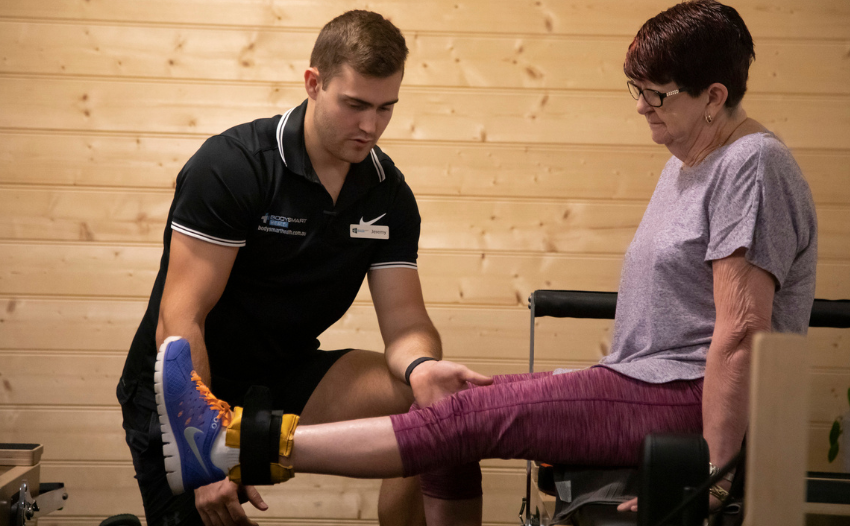
Patellofemoral Pain Syndrome
What is it?
It’s invisible but it’s certainly not inexistent, and it may be starting to disturb many aspects of your life. The good news is there are steps you can take to help. Did you know movement and exercise is essential in helping manage and treat chronic pain?
So what is chronic pain?
Patellofemoral Pain Syndrome (PFPS) is a blanket term for pain occurring at the front of the knee in or around the Patella. This condition is most commonly associated with a sudden increase in activity involving the knee extensors (Climbing Stairs, Jumping, Squatting, Running, Cycling, Etc.). PFPS most commonly affects adolescents and young adults, however can affect the wider population as well.
PFPS can often occur without a particular incident happening to bring on pain, as it is an overload type injury that often builds up over time. It can stem from a number of different reasons, being weakness, decreased mobility, sudden increase in activity, or even lack of stability in the lower limb from Hip to Ankle.
For someone experiencing PFPS symptoms most often include but are not limited to:
– Increased Pain with Stairs and Squatting
– Increased Pain with Cycling and Running
– Sitting with a bent knee
– Decreased Stability in the affected knee
What can you do to help yourself?
If you are currently experiencing pain in your knee that you think may be PFPS then we recommend the following steps. Firstly stop performing the aggravating movements to avoid flaring up the pain in the knee, this may mean transitioning to low-impact exercises for the time being. We also recommend using the POLICE method:
– Protect – avoid performing the aggravating movements as able
– Optimal Loading – Keep exercising and moving the joint as pain allows
– Ice – Icing the joint for 10-15 minutes a few times a day can help with reducing pain sensation as well as reducing any swelling present in the joint
– Compression – Use of a compression garment may help with reducing swelling while also providing some support to the joint
– Elevate – When able keeping the joint elevated to assist with fluid drainage.
If symptoms persist or continue to increase we recommend a consultation with a Physiotherapist to better determine where your pain is coming from and how to best rehabilitate you back to the
activities you enjoy.
How can Physiotherapy help with your pain?
A Physiotherapist will perform a full examination from your medical history, recent history of your pain and activity levels as well as a thorough physical examination to determine what are the driving forces of your pain. From here we will provide you with an action plan outlining a treatment plan for you as well as a prognosis for how long we expect it to take for you to recover from your injury.
Our treatments will then include a mixture of Manual Therapy Techniques to assist with improving mobility and helping to reduce pain in the affected area. We may include Taping as part of treatment to provide increased stability and support to the knee. We will also begin you on an exercise program which we will continue to progress as needed for each individual targeted towards your goals and getting you back to what you want to be doing ASAP.
Resources:
https://pubmed.ncbi.nlm.nih.gov/25603546/
https://pubmed.ncbi.nlm.nih.gov/28559754/
https://www.ncbi.nlm.nih.gov/pmc/articles/PMC9113904/

Author: Luke Stephens, Physiotherapist (B.ExNutrSci) (MPhysiotherapy)
Clinic: Redcliffe
If you would like to make an initial appointment with Luke, you can contact the Redcliffe clinic at 1300 630 204.